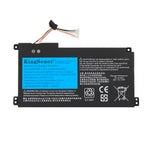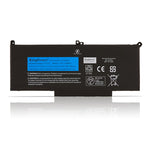您的購物車中沒有商品。
The difference between battery capacity and energy: why not just look at mAh?

When buying mobile phones, power banks, or electric vehicles, we were attracted by slogans such as "20000mAh large capacity" and "400 km long battery life". However, in actual use, we found that the nominal capacity is far from the real experience. The key behind this lies in the essential difference between battery capacity and energy.
Battery capacity and energy
Battery capacity is the total amount of charge stored in the battery, measured in milliampere-hours (mAh) or ampere-hours (Ah). For example, a 2000mAh battery means that it can be discharged at a current of 2000mA for 1 hour. This parameter only reflects the charge storage capacity and has nothing to do with voltage.
Battery energy is the total electrical energy released when the battery is fully discharged, measured in watt-hours (Wh). The calculation formula is: Energy (Wh) = Capacity (Ah) × Voltage (V). For example, a 3.7V, 2000mAh mobile phone battery has an energy of 7.4Wh. Energy combines the effects of charge and voltage and directly reflects the actual available electrical energy.
How energy is determined by capacity and voltage
Voltage is the core variable in energy calculation. Taking electric vehicles as an example, a certain model uses a 400V battery pack with a capacity of 60Ah, an energy of 24kWh, and a range of about 400 kilometers; if the voltage is increased to 800V, the energy doubles at the same capacity, and the range can be increased to 600~700 kilometers (due to reduced current loss).
Another example is the comparison between power banks and laptop batteries: a 20000mAh power bank (5V) has an energy of 100Wh, while a 10000mAh laptop battery (11.1V) has an energy of 111Wh. The latter has a smaller capacity but higher energy.
Practical application misunderstandings
Differences in device voltage: Low-voltage devices such as mobile phones and power banks are usually marked with mAh because the voltage is stable (such as 3.7V or 5V); while high-voltage devices such as electric vehicles and energy storage devices are more commonly marked with Wh, which is convenient for intuitive comparison of total energy.
Marginal effect: Blindly increasing battery capacity may lead to a sharp increase in cost and weight, but the improvement in battery life is limited. For example, the battery capacity of a certain brand of electric vehicles increased from 56.5 kWh to 80.87 kWh, and the actual battery life only increased from 490km to about 600km, while the cost of purchasing the car increased by tens of thousands of yuan.
Effects of low temperature and aging: Low temperature will accelerate the drop in battery voltage and reduce the available capacity; aging batteries have a lower discharge platform, and the actual energy decay is obvious at the same capacity.
Manufacturer labeling logic and industry trends
Low-voltage devices (such as mobile phones): mAh is more intuitive, and users can compare battery life without conversion.
High-voltage devices (such as electric vehicles, energy storage batteries): Wh more directly reflects the total energy, and high-voltage design can reduce current loss and improve energy efficiency.
Technological innovation: Battery energy density has become a key indicator. For example, the energy density of a certain brand of mobile phone battery is 141.4Wh/kg, and a capacity of 56.5kWh can achieve a battery life of 490km; while the energy density of lithium iron phosphate batteries has exceeded 200Wh/kg, pushing the battery life of new energy vehicles into the 700km era.
How to choose batteries scientifically?
Same voltage devices: Directly compare mAh; the larger the capacity, the longer the battery life.
Different voltage devices: Wh needs to be converted, for example, a power bank marked with 20000mAh (5V) has 100Wh, while a laptop battery with 10000mAh (11.1V) has higher energy.
Pay attention to the usage scenario: In low-temperature environments, batteries that support a wide temperature range (such as -20℃~55℃) are preferred; it is recommended to keep 50% of the power for long-term idle devices.
Be wary of false capacity: Regular power banks will mark the rated capacity (actual available power), while falsely labeled products may have a nominal cell capacity, with an actual conversion rate of less than 70%.
Battery capacity is "water volume", and energy is "water volume × water pressure". When choosing a battery, it is necessary to make a comprehensive judgment based on voltage, capacity, and device requirements. For example, mobile phone users who pursue thin and portable mobile phones can give priority to high-energy density batteries; while electric vehicle users need to weigh battery energy, weight, and cost. Only by breaking the "mAh-only theory" can you truly choose a battery product that suits you.
If this article still doesn't help your laptop battery, you can buy a new battery at BatteryMall.com
If you want to learn more about batteries, please visit: BatteryMall.com/blogs/suppor








